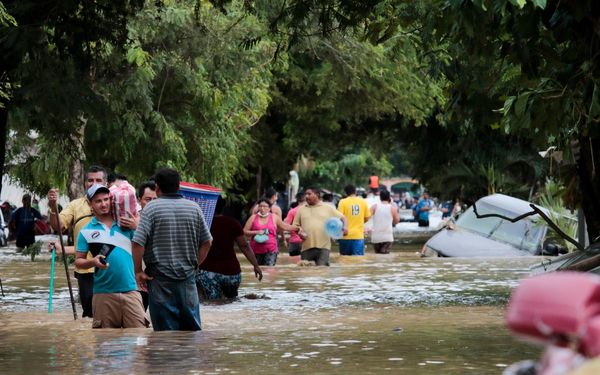Trees have come crashing down in Bengaluru in large numbers even before the onset of the southwest monsoon. According to data from the Bruhat Bengaluru Mahanagara Palike (BBMP), over 400 trees were uprooted in the city between April and June.
In some cases, tree falls have proven to be dangerous for passersby and residents, and even fatal. Recently, two tree related accidents were reported in the city: a tree crashed on the compound wall of the Indian Institute of Science (IISc.) and a labourer was killed, and a branch of a tree fell down and nine people, including a minor, were injured.
As rain pounded many parts of the city, while also being accompanied by gusty winds, the BBMP control room received 1,806 tree-related complaints between April 13 and June 21. During the same period, a total of 465 trees were wholly uprooted, while another 1,341 branches had fallen to the ground, the data from the Forest Department of the civic body shows.
“In Bengaluru, many old trees are concretised up to root surface and this is a big problem. Roots are not stable and deep when there is concrete. Further, sometimes just branches on one side of the tree are chopped down and these lopsided trees become weak. All of this leads to the falling of trees. Most old trees are also riddled with holes or ants or fungal infections which need to be treated and cleaned to make them stronger. Primarily, we need a tree audit to take more action,” said Harini Nagendra, ecologist.
With a number of plantation drives being carried out in the city, experts pointed out that it is necessary to plant native species which represent the natural biogeography of the place. Many species of trees which are prominent in the city are largely not native and most of them have shallow roots which make them prone to falling, they said.
Abi T. Vanak, ecologist and senior fellow at ATREE, said: “Historically, Bengaluru’s habitat might have resembled an open natural ecosystem with far fewer trees than you see now. Further, the trees would have been more adapted to dryland conditions. What we currently have is a dominance of exotic species, such as raintree, gulmohar, jacaranda, etc., which make great avenue trees, and certainly add a lot of shade and colour to the city, but are not native.”
Another issue which comes with plantation drives is that of the choice of the right trees. While many choose to plant more on lakebeds and grassland, ecologists say that this hampers the natural biodiversity of the land patches. In an urban setting, it is also important to consider how the vegetation supports the infrastructure. As Ms. Nagendra points out, planting Ficus trees in between medians is not a good idea as there is no space for the large trunk. “Maybe Honge or tabebuia with relatively smaller trunks are a better fit,” she said.
In urban cities, another vital concept which should be taken into consideration before planting trees is the availability of water. “The most important thing to keep in mind is that trees require lots of water. A city like Bengaluru, which is facing a severe ground water crisis, and that imports most of its drinking water, can ill afford to grow hyper dense “forests” which are water guzzling. In this regard, initiatives which use excess treated wastewater from apartment buildings can go a long way in solving this problem”, Mr. Vanak said.
Ecologists and BBMP officials agreed that there is an increased level of awareness among citizens who conduct plantation drives. As monsoon progresses, BBMP has 28 teams on ground which take care of clearing fallen branches and trees and removal of branches which might be dangerous, according to a senior official within the Forest department, BBMP.
To plant and which ones to avoid?
Suitable tree species for Bengaluru – Honge, Neem, Mango, Jackfruit, Tamarind, Jamun, Rain, African Tulip, Tabebuia
To avoid – Gulmohar, Copper pod and Eucalyptus, Acacia, Silver oaks (on lake beds)
Fallen trees and branches (between April 13 and June 21)
Total complaints received – 1,806
Total trees fallen – 465
Broken branches - 1,341







